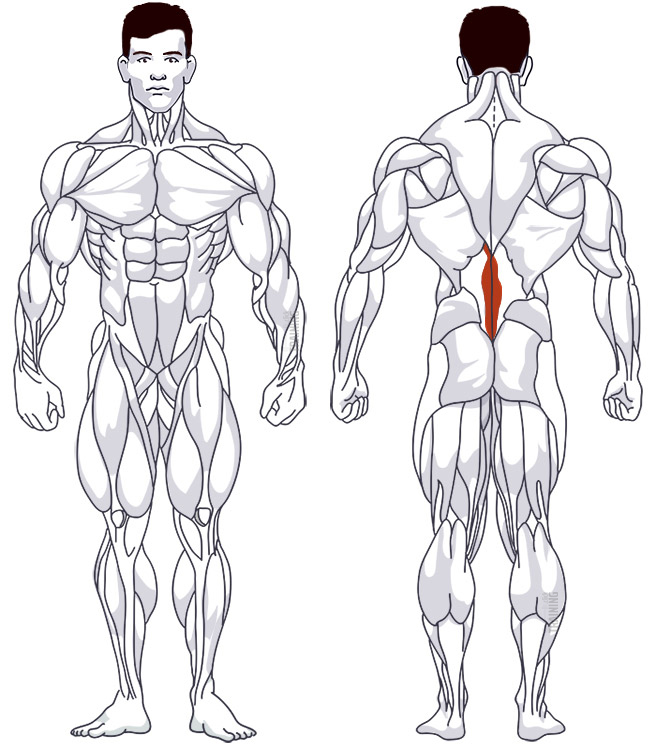Seated Back Extension
Isolation exercise, MachineOverview

Main muscles
- Back: Back extensor
(Musculus erector spinae)
Training plans
Here you can find example plans for seated back extension training:
Seated Back Extension: Basics and alternatives

Involved main muscle groups:
Seated Back Extension
Seated back extension is a classic gym exercise that targets the lower back. It’s an isolation exercise where you extend your upper body against the weight while moving backward.
This exercise is popular because it’s easier to perform compared to many other lower back training routines and has a low potential for error. This makes it suitable for beginners and those who can’t yet do heavy compound exercises like the deadlift.
As alternatives, you can try the back extension with the hyperextension bench, or on the exercise ball, flat bench, or lying on the floor. All of these exercises work the same muscles, but the main difference is the intensity. With seated back extension, you can easily increase the weight, which isn’t as simple with the other variations.
Correct Execution
There are several setup variations for the machine, but these differences in the backrest, footrest, leg clamps, or presence of handles for stabilization don’t affect the exercise much.
As always, adjust the machine to fit your body size, allowing for optimal movement range. Depending on the machine, you can adjust the leg rest or backrest – or both.
Most machines have a release for the training arm, letting you swing it back/up or bring it to your back. This makes it easier to sit down and stand up. Start with a low weight initially, so your back can adjust to the new load.
Video Tutorial
Step-by-Step Instructions
If available, set the training arm to the release position with the lever. Sit on the seat cushion.
If possible, adjust the leg rest to your body size. Your buttocks and lower back should be firmly against the seat’s back part. Your feet should stand firmly and securely on the rest, stabilizing your body.
Set the training weight.
Bend your upper body forward with a straight back and minimal arching. Don’t round your back. Now move the training arm to your back using the release lever. The backrest should be just below your shoulders. If the cushion is too high or low, adjust the position accordingly. You’re now in the starting position.
Push the backrest backward by extending your upper body. Ensure your back stays straight throughout the exercise. Hold the cushion briefly in the stretched position before lowering the weight back down to the starting position in a controlled manner.
Common Mistakes
As mentioned earlier, the potential for error is low due to the machine’s guidance. However, mistakes can still happen. Make sure to perform the exercise slowly and controlled to avoid swinging your upper body.
It’s also important not to overstretch your back. While the goal is to stretch your back backward, avoid forming a pronounced arch to move the backrest further. The movement should come from your hips.
Lastly, ensure the backrest is set correctly. If it’s too low or too high, it can lead to tension or, in the worst case, injuries.